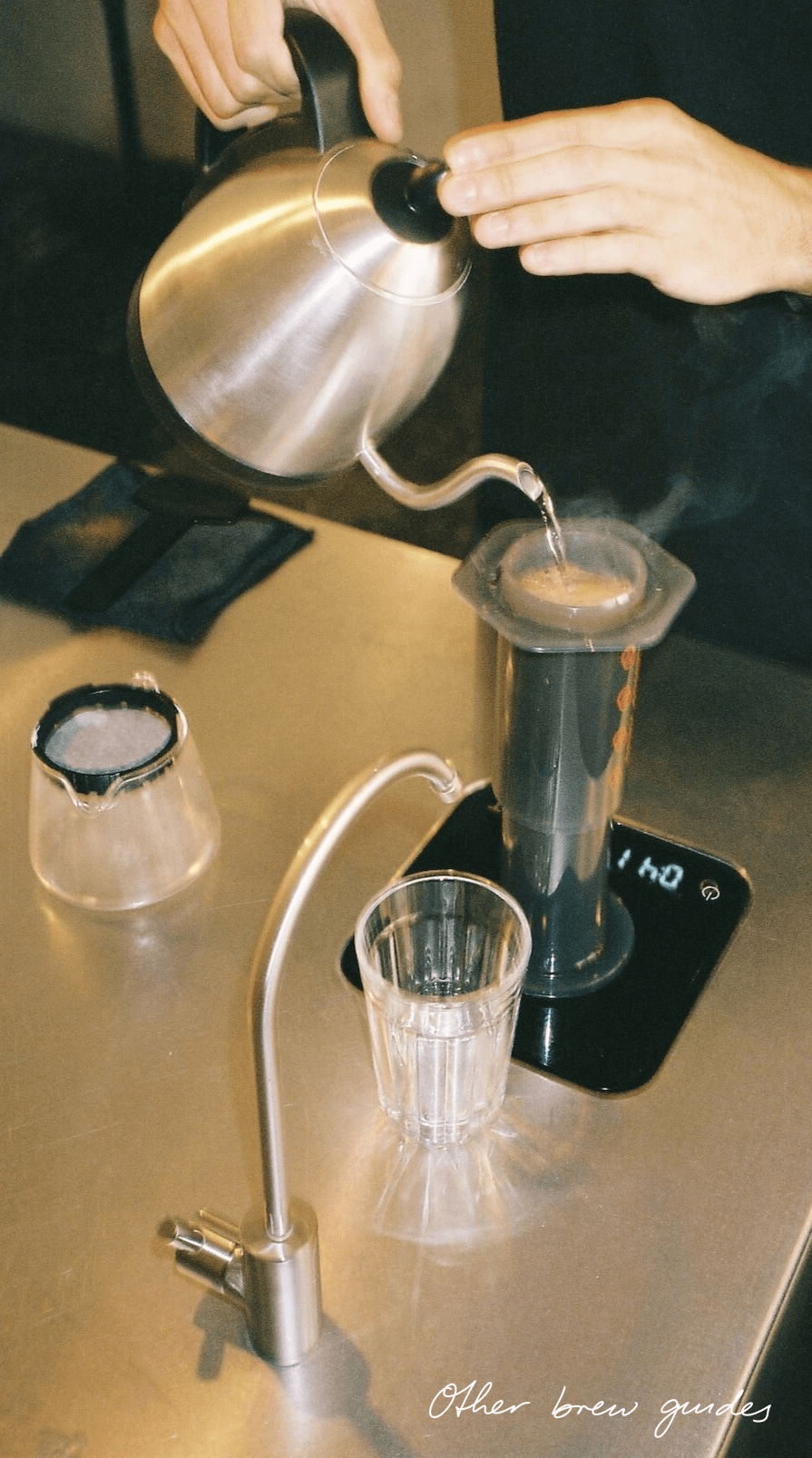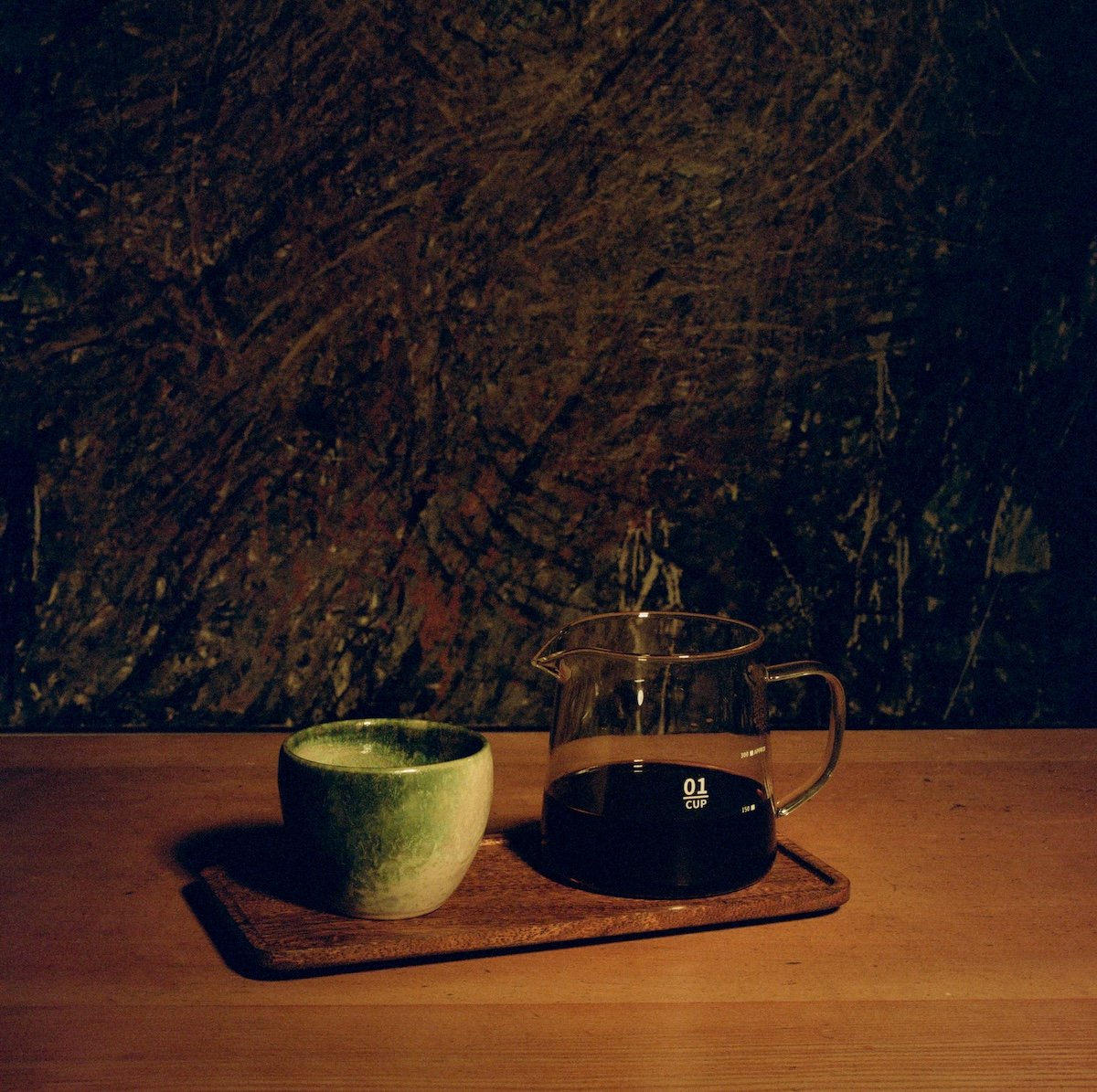Brew guides
We recommend our roasted coffee for all brew methods, regardless of whether it is immersion, percolation or espresso. We believe that there is one correct way to roast a single coffee, roasting lightly, in such a way as to release its innate qualities and showcase its quality. This approach means we often have to understand coffee brewing and the effect we can have here, and not necessarily follow brewing guides exactly. Here we provide an outline for brewing using percolation, immersion, and espresso brewing methods.
V60
15g Coffee
250g Water
0:00 Pour up to 60g
0:45 Pour up to 155g
1:30 Pour up to 250g
Espresso
18g coffee
50g Espresso in the cup
Brewtime: 18-22 seconds
Steeped
200g Water
0:00 Pour all water into cup
Add steeped bag and dunk 10 times
Let steep for 4 minutes
Enjoy

Aeropress (Inverted)
14g Coffee
210g Water
0:00 Pour up to 210g
1:45 stir 6 times
Add cap an press the coffee into a server or cup
French Press
20g coffee
300g Water
0:00 Pour all water
4:00 break the coffee crust and stir 6 times
8:00 put in plunger and pour into cup
Ibrik "Turkish Coffee"
10g Coffee
120g Cold Water
Mix coffee and water and add to a burner on full heat
When coffee starts to rise up in the Ibrik pour into cup
Coldbrew
20g Coffee
300g Water
Mix water and coffee
Wait 24 hours and drain into a bottle

Water and Coffee
For natural water hardness, the two most important GH ions are Magnesium and Calcium. Magnesium has a very strong attraction to natural acid molecules, so has a huge effect on perceived acidity in coffee, pulling out flavours we like to describe as fruits in coffee, normally sharper acidities like citrus and forest berries. Calcium has a slightly weaker interaction, so tends to enhance softer acidities like strawberry and cherry, while also directly enhancing body. The final piece in the puzzle is KH, which has a slightly more complicated interaction. Through a phenomenon known as buffering, the carbonate hardness tries to keep the pH (the scientific measurement of acidity) of the water around 7, which is neutral. This means that controlling KH is very important. Too little, and the coffee tastes unbalanced and sharply acidic, no matter what brewing parameters are changed. Too much, and it is impossible to perceive any acidity in the coffee, leaving a flat and dull cup.

Controlling Balance
To brew coffee well, extraction is an important concept to understand. If we were able to dry out coffee grounds after they have been brewed, they will have lost about 20% of their weight. This is the amount that we have dissolved into our cup during brewing, and the percentage is termed extraction. This is important, as flavour does not extract from coffee in a linear way, more is not necessarily more. When we begin to brew a coffee, the natural acids present in the coffee will extract most easily, followed by sugars, and then heavier bitter compounds towards the end of the brew. This means controlling how much we extract from a coffee will control the balance of flavour in your cup. Extract too little, and we have a sour coffee, too much acid from the beginning of the brew, and not enough sweetness to create balance. Extract too much, and we will extract too much bitterness from later in the brew, resulting in an overall bitter and drying cup.

